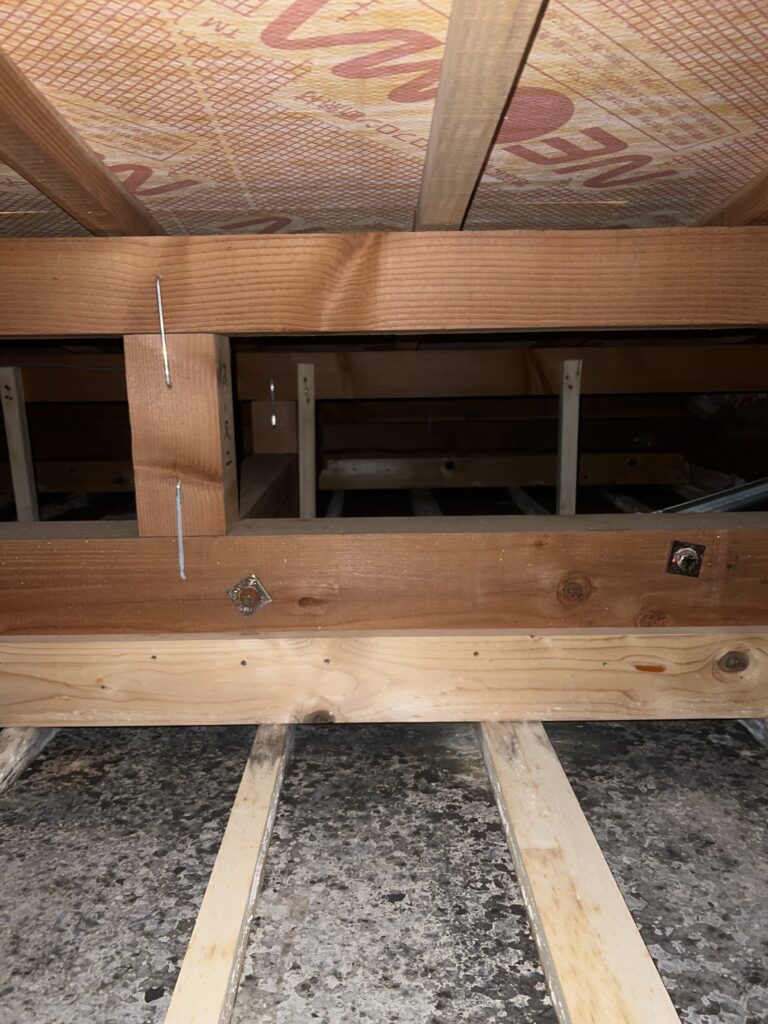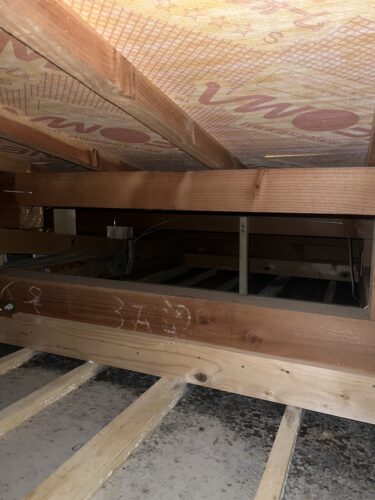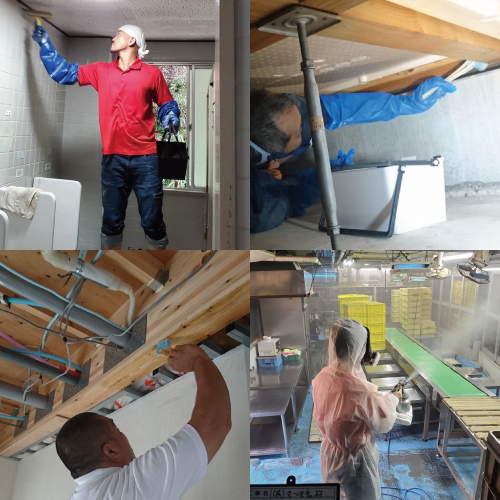Problem Statement
In bathrooms, washrooms, and kitchens of public facilities, moisture buildup due to insufficient steam ventilation has led to serious mold damage. Black mold spreading on walls and ceilings not only harms the appearance but also increases health risks, making urgent action necessary.
What You Will Learn
This article explains the mechanisms behind mold damage caused by poor humidity control and ventilation, and introduces specific examples of solutions such as installing ventilation fans and implementing other moisture control measures tailored to each facility’s characteristics.
Benefits of Reading
Readers will understand the causes of mold damage in bathrooms, washrooms, and kitchens, and learn how to effectively prevent mold by combining ventilation fans with humidity control strategies. This knowledge will help maintain a hygienic and comfortable environment over the long term.
1. Current Mold Damage Situation in Bathrooms, Washrooms, and Kitchens
Bathrooms, washrooms, and kitchens are environments where water and moisture are frequently present, making them prone to mold growth. In public facilities, frequent use increases the speed at which mold spreads. These areas require strict hygiene management, and once mold appears, it affects not only aesthetics but also facility operations.
1-1. Common Characteristics of Mold-Prone Areas
Bathrooms, washrooms, and kitchens are enclosed spaces where moisture tends to accumulate. Water droplets and steam cling to walls, ceilings, and floors, taking time to dry. The tiny gaps and roughness in building materials allow moisture and organic matter to settle, providing a breeding ground for mold. Areas hidden from view, such as behind lighting fixtures or furniture, are often neglected during cleaning, further encouraging mold growth.
1-2. The Severity of Mold in Public Facilities
In public facilities, bathrooms and washrooms are used multiple times daily, meaning moisture is constantly present and drying time is insufficient. In kitchens, cooking steam mixes with grease, leading to both mold and sticky residues. These adhere to walls and ceilings, making complete removal difficult and encouraging repeated mold regrowth. Certain types, such as black or blue mold, release spores into the air, posing health risks to users and staff alike.
2. Main Causes of Mold Damage and the Role of Insufficient Steam Ventilation
The leading cause of mold damage is high humidity. In moisture-heavy environments like bathrooms and kitchens, inadequate ventilation traps steam inside, creating perfect conditions for mold growth.
2-1. The Three Conditions for Mold Growth: Humidity, Temperature, and Nutrients
Mold requires humidity, warmth, and nutrients. Humidity above 70% triggers rapid mold growth. Temperatures between 20–30°C (68–86°F) are ideal. Nutrients come from dust, skin oils, soap scum, cooking oils, and food residues—common in any facility. When all three conditions are met, visible mold can develop in just a few days.
2-2. The Impact of Poor Ventilation and Steam Retention
Without proper ventilation, indoor humidity remains high. In bathrooms, hot steam condenses on cool surfaces, while in kitchens, cooking steam and grease form persistent films. If the ventilation fan is underpowered or poorly placed, moisture removal is inefficient, allowing mold to root deeply in materials.
3. Mold Formation Mechanisms in Bathrooms, Washrooms, and Kitchens
Mold develops differently in each space. In bathrooms, persistent high humidity is the main driver. In washrooms, splashing water and condensation are the main culprits. In kitchens, steam and grease work together to create a mold-friendly environment.
3-1. Condensation and Wall Mold in Bathrooms
Bathrooms have the highest humidity levels. Warm steam condenses on cooler walls and ceilings, seeping into tile grout and panel gaps where mold roots form. Shampoo and soap residues also serve as nutrients, especially near ceilings and ventilation openings.
3-2. Water Splashes and Grease in Washrooms and Kitchens
In washrooms, splashed water from handwashing and brushing teeth lands on mirrors, walls, and floors, staying damp long enough for mold to grow. Under-sink cabinets, with poor ventilation, trap moisture. In kitchens, steam and grease from cooking stick to ceilings and walls, feeding mold and sealing in moisture.
4. Necessity and Selection of Ventilation Fans
Adequate ventilation is key to preventing mold caused by trapped moisture. Installing an appropriate ventilation fan removes excess humidity and interrupts the mold growth cycle.
4-1. Determining Ventilation Capacity and Understanding CFM
Fan capacity should match room size and moisture output. Capacity is measured in CFM (Cubic Feet per Minute). A small home bathroom may require 50–80 CFM, but large public facilities may need 150+ CFM. Long or curved ducts reduce efficiency, so extra capacity is recommended.
4-2. Importance of Quiet Operation, Energy Efficiency, and Placement
Quiet fans encourage frequent use. Energy-efficient models with low power consumption reduce operating costs. Placement matters: fans should be installed near moisture sources and high points where steam gathers. Poor placement reduces effectiveness.
5. Case Studies of Mold Prevention in Public Facilities
Learning from real-world examples helps in planning effective mold prevention.
5-1. Improvements from Ventilation Fan Installation
One facility replaced an undersized fan with a high-performance ceiling unit featuring a timer for post-use operation. Humidity dropped by 15%, and new mold growth ceased within three months.
5-2. Benefits of Regular Cleaning and Anti-Mold Coating
Another facility combined fan installation with anti-mold coating on tile grout and silicone joints. The coating blocked mold roots from anchoring, reducing cleaning frequency and maintaining appearance.
6. Maintenance and Sustaining Ventilation Fan Effectiveness
Fans require regular cleaning to maintain airflow.
6-1. Cleaning Filters and Inspecting Ducts
Filters should be cleaned every three months, monthly in greasy kitchens. Ducts should be professionally cleaned once or twice yearly to prevent blockages and internal mold.
6-2. Optimizing Operation Time
Run fans for 30–60 minutes after showers and one hour after cooking. Timers and humidity sensors ensure consistent operation without waste.
7. Additional Mold Prevention Beyond Ventilation Fans
Fans are vital but not sufficient in all cases.
7-1. Using Anti-Mold Paint and Specialized Agents
Anti-mold paints form protective films on surfaces. Specialized sprays can treat grout lines and ventilation openings to deter mold.
7-2. Indoor Humidity Control and Dehumidifiers
Dehumidifiers help maintain indoor humidity below 60%, especially in rainy or cold seasons when ventilation alone is insufficient.
Mold Removal & Renovation: Kabibusters Osaka, Mold Removal Reform Tokyo & Nagoya, and Taiko Kensou Co., Ltd.
Bathrooms, washrooms, and kitchens in public facilities face persistent mold risks. Kabibusters Osaka and Mold Removal Reform Tokyo & Nagoya use the proprietary MIST Method®, adjusting specialized agents to the mold’s growth stage and surface condition. This non-abrasive process removes mold at its roots while keeping materials intact.
Post-removal, anti-mold treatment is applied, with fine mist penetrating deep into materials and eliminating airborne spores. Long-lasting antimicrobial measures prevent recurrence.
Taiko Kensou Co., Ltd. offers the rare ability to handle both mold removal and full renovations in-house, ensuring speed, cost efficiency, and quality consistency. This includes bathroom remodels, wall/floor replacements, ventilation system upgrades, and kitchen refurbishments—all with built-in moisture and mold resistance.
Our renovation services prioritize comfort and durability, covering bathrooms, washrooms, kitchens, interior works, and exteriors. Every step integrates mold prevention, ensuring a long-lasting, hygienic, and visually appealing result.





